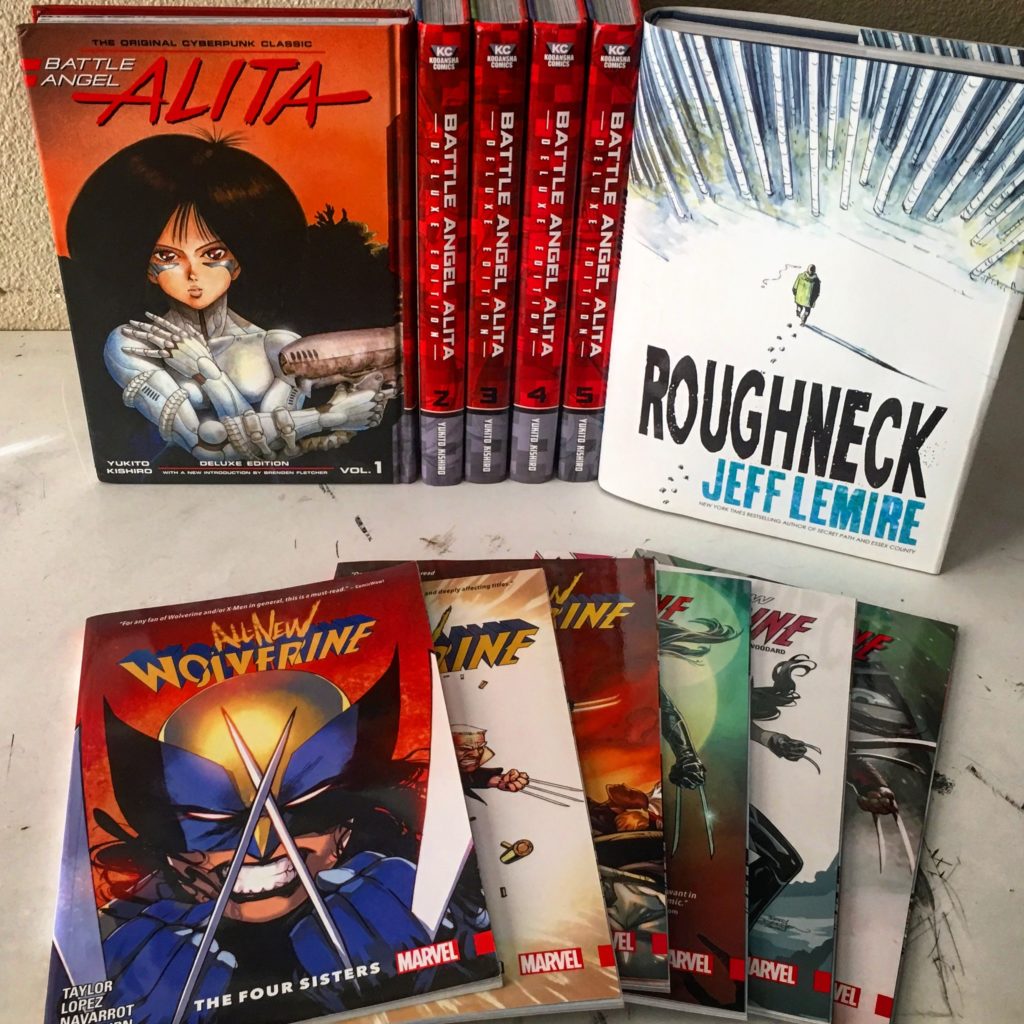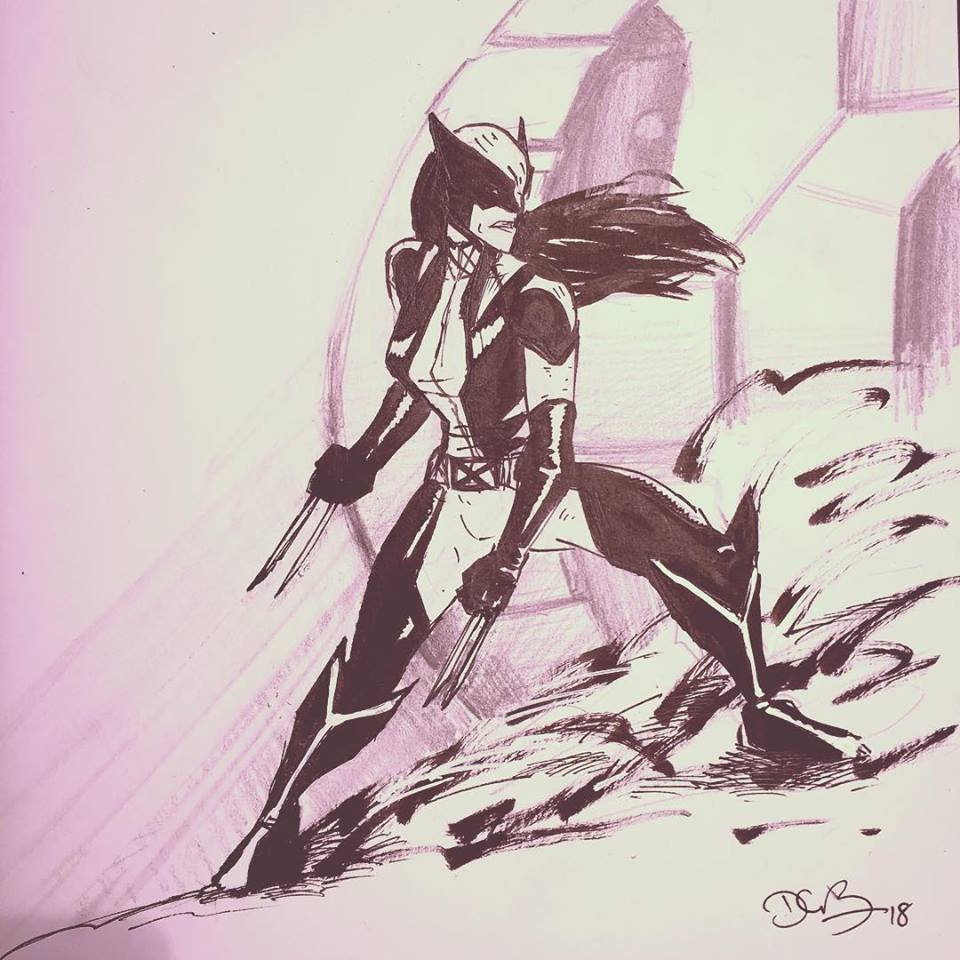The Year – 2018 : Comics
I’m going to end the year by making individual posts about the things that really stuck with me this year. These will be the things that I kept coming back to and kept thinking about and, if possible, kept diving into the hole it created in my wallet.
I figured it would be best to start by talking about comics. For this, I’m only focusing on the trade collections and graphic novels instead of blending them with ongoing series I collect in individual issues. I could render a list of reasons as to why I’m not including ongoing series on this list, but it would be elaboration to cover a specific point: there are no ongoing series that really struck a meaningful chord in me. All of the series I read are good and have enjoyed what I collect, but they’re more entertaining than inspiring, and that’s okay.
Even so, what you read below is by no means an exhaustive list, but it’s meant to single out the books that paint a picture of where my head space was at during the year.

1. Battle Angel Alita Deluxe Editions
Written and illustrated by Yukito Kishiro, published by Kodansha Comics.
The road of my year’s comics reading was paved by Yukito Kishiro’s masterpiece, Battle Angel Alita. Stunningly reprinted by Kodansha Comics into five oversized volumes, this year offered me the chance to check a major item off of my bucket list by allowing me to read through a series whose art and story played such a fundamental part of my creative development during my teenage years.
I read the first few arcs back in the ‘90s, but going back into the entire series in these gorgeous deluxe editions were an interesting case study in the art of comics. Though I didn’t love how it ended, the overall progression showcases Kishiro’s talent and creativity.
I don’t know how much of the series was planned out by Kishiro, but it certainly seems guided by whim for most of it, and––despite my dissatisfaction––the ending does an admirable job of bringing the major story threads to a close.
More than anything, Kishiro’s art––though much more violent than I remembered it being––is stunning in its expressiveness of character and environment, pushing me to try a bit more patience with my art since even a little more effort could yield exponentially greater results.
2. Roughneck
Written and illustrated by Jeff Lemire, published by Gallery 13.
My appreciation for the work of Jeff Lemire is no secret by this point, much less that of his most recent graphic novel, Roughneck, a subdued but gritty tale about a family’s loss and redemption with a dash of Canada and hockey thrown in.
Lemire is a very cinematic artist, though not one who tends toward realism. Because of that, his style is a very interesting mix. To be honest, his work, on its surface, isn’t something I’m innately drawn toward. It seems to lack confidence of line and composition, though whatever lack of rendering he may have he makes up with his pacing, page design, and narrative clarity. It may sound diminutive, but his work is made for adaptation to tv or film and it’s frankly surprisingly we haven’t seen an adaptation of Lemire’s work yet on screen (though much of his work has been optioned).
Though Roughneck, in my eyes, is a lesser work than his absolutely compelling series, Royal City, the graphic novel acted as a perfect encapsulation of what makes Lemire’s self-illustrated, capital-L Literary graphic novels great––simple, clear storytelling, smart “cinematography”, and a confidence of character (and associated nuance) that makes for a gripping dramatic read. While reading Royal City may have been more inspiring to the point of making me say, “this is a comic I want to make,” Roughneck provided a more immediate and important reaction, provoking me to think, “this is a comic I could make.”
3. All-New Wolverine
Written by Tom Taylor, with art by David López (among others), published by Marvel Comics.
Though I had jumped back on the current X-Men bandwagon by following, from first to last, the Marvel series X-Men Gold (and being wholly underwhelmed by it), it wasn’t until I started reading the collected trades of All-New Wolverine that I actually got introduced to what I’ve internally dubbed “modern Marvel.”
Taylor’s All-New Wolverine pulls from the more whimsical direction of books that have actually kept Marvel’s comics relevant, because the success of their movies haven’t driven many new readers to the original medium. In my head, All-New Wolverine sits on the daïs alongside The Unbeatable Squirrel Girl, Captain Marvel, and Ms. Marvel––a.k.a. the books that have actually brought new readers to the Marvel Universe––and they’re all linked by a style marked by earnestness and humor over melodramatics and action (although both are still very present).
Although I felt the pacing was a bit fast, I found the characterizations in All-New Wolverine compelling, and the stories, too, were always engaging.

On a more personal level, the original Wolverine, the inimitable Logan, was my favorite character growing up. He and I shared enough characteristics to find in his contrived plights a sense of camaraderie and, of course, power fantasy. He was Canadian, I am a quarter Canadian (the son of a very proud half-Canadian father). Logan has anger issues, which is something I’ve fought against my entire life.
As I aged, I realized the silliness of the character but I still held onto that nostalgic loyalty, to the point of when they introduced his young, female clone, Laura Kinney a.k.a. X-23––and then made her into the new Wolverine––I had my hesitations.
However, guided by better sentiments and maturation I ventured into this new series and found myself wholly won over by its charm. Not only that, but what I loved about it was Laura’s contrast to Logan and even though she was diametrically different in history and motive, there were aspects of both story and art that really showed her as a step forward from what Logan represented, embodying aspects of what made him great and actually doing new and interesting things with those base traits.
So, this book was a salve on my dying nostalgia, a book that was more of a gateway into modern superhero comics than a banner for my own creative goals, but with making comics––an endeavor that requires me to keep my head down––it’s nice to find something that really allows me to keep apprised of what’s going on in the greater scene.
––––––––––––––––––––––––––––––––
These books form the broader strokes of what I consumed as a reader this year and the finer lines between them are no doubt just as important. However, these books really pushed me forward in different ways, leaving me––as a creator and as a fan––feeling much more confident at the end of 2018 than I did at its start.

Discussion (2) ¬